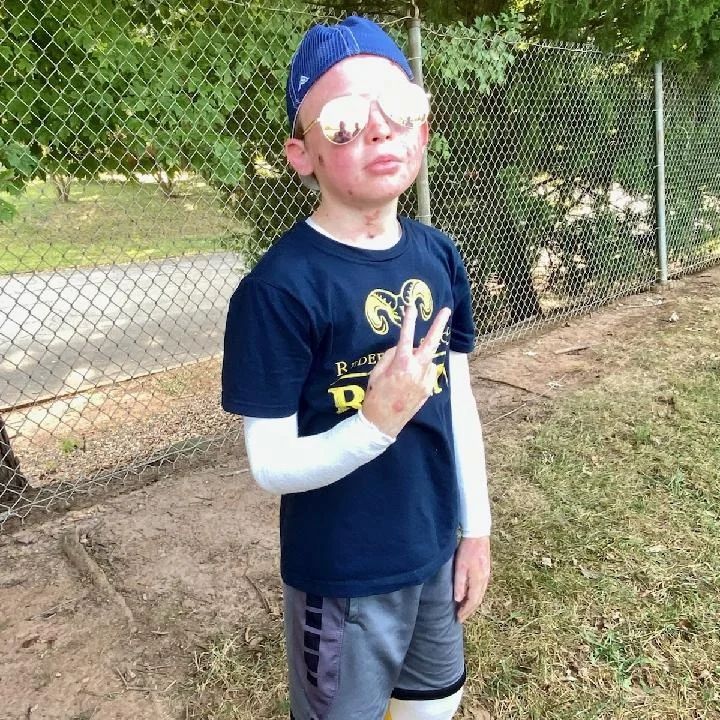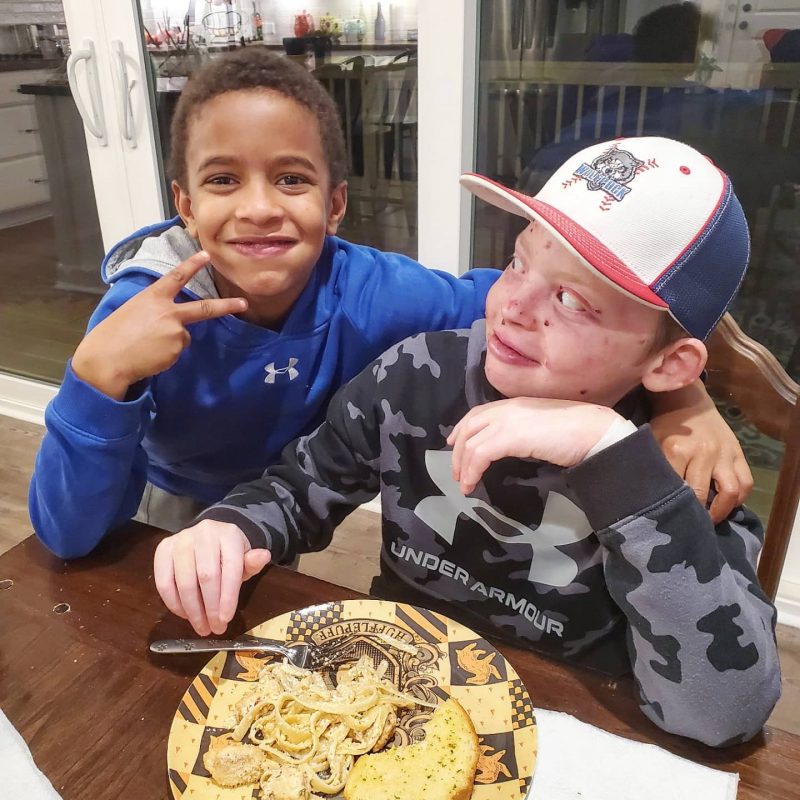An EB Q&A for Rare Disease Day
Written by |

In light of Rare Disease Day on Feb. 28, I wanted to answer some common questions I am asked about my son Jonah, who has epidermolysis bullosa.
This will be a pretty good column, but if you want to read something even cooler, you should head back to this column and this column, because I interviewed Jonah. He’s the real MVP.

Jonah, the real MVP. (Courtesy of Patrice Williams)
What is epidermolysis bullosa, exactly?
In nontechnical terms, epidermolysis bullosa, or EB, is a disease in which a person’s skin isn’t anchored to their body. Many “binding proteins,” such as laminin and collagen, hold down our skin. A person with EB doesn’t produce one of these proteins, or not enough of them, so their skin slips and slides, causing blistering and wounds.
Unfortunately, EB can affect a person internally, too, including places like the GI tract, trachea, esophagus, eyes, lips, gums, tongue, and even teeth.
What type does Jonah have? Is it the worst kind?
Jonah has intermediate junctional epidermolysis bullosa (JEB). Specifically, he doesn’t produce enough type XVII collagen. He has a moderate type, although it is still horrific. Children born with severe JEB typically die within the first year of life. Children born with recessive dystrophic EB experience severe and debilitating scarring and often pass away in their early to mid-20s. So, although Jonah’s EB type is bad, we know it could be much worse.
What is Jonah’s prognosis?
We don’t know! Because JEB is a recessive disorder, he inherited one faulty gene from me and one faulty gene from his dad. One of those mutations has been seen once. Ever. The other has never been documented in history. So, we’ve always had to take it one day at a time.
We are uncertain how Jonah’s EB will manifest as he goes through puberty and into adulthood. So far, he’s beating all the odds and is very stable.

Jonah watches TV with his dog, Joey. (Photo by Patrice Williams)
Is there a cure for EB? How do you treat it?
There is no cure for EB, and the only tried and true treatment is wound care. Hydration, good nutrition, boosting the immune system, and proactive dental and medical care also are necessary. Bandaging is used not only to treat current wounds, but also to attempt to prevent new ones from forming.
There are also many clinical trials out there for EB, but unfortunately, not many for junctional EB.
Can Jonah eat?
Yes! But it often is hard for him. He frequently has wounds on his tongue, gums, and lips that make it uncomfortable to eat. He is primarily fed through a gastrostomy tube, and he eats by mouth mostly for pleasure, not sustenance. His favorite foods are wings and pizza!
What types of bandages do you use? How much do they cost? Will he always have to be wrapped?
I wrote an entire column about our bandaging process. It boils down to a contact layer to prevent sticking, then a bandage “patch” of Mepilex Lite, then a big sheet layer of Mepilex Transfer, then roll gauze, and then a sleeve to hold it all on.
All of this costs a bajillion dollars, give or take. I think we figured out that without insurance, it would cost between $900 and $1,100 per dressing change. We do dressing changes every 48 hours, so a bajillion dollars sounds about right.
We don’t know yet if Jonah will always have to be fully wrapped. Some folks with EB just spot wrap and deal with increased blistering. Right now, Jonah likes full-body bandages because they give him the protective freedom to do more things.
How does EB affect your everyday life and activities?
“How does it not?” really is the question. It affects everything — where we go, when we go, what we do, what we pack, and how we plan. We work around bandage changes, tube feeding, and activity-prohibiting wounds. We consider crowd size, the amount of walking, heat, and the EB-friendliness (or lack thereof) of everything we do. For example, we are going to Mexico in a few weeks, and I’m mostly freaking out because I cannot control all the things.
What’s the hardest thing about EB?
For Jonah, who is almost 13, I’d say being different is the hardest part. And being unable to play sports. For me, the hardest thing is being helpless to take his pain away and having to watch him suffer.
What has surprised you most about this journey?
Nobody really asks me this, because when learning about EB for the first time, most folks don’t start waxing philosophical. But I’ll answer anyway. I’ve been most surprised by the strength of my family. Jonah is the strongest person I know, obviously. But I also admire Gideon, our 9-year-old, for the way he helps, adapts, and sticks up for Jonah. And my husband, Matt, and I have overcome so much, too, and are all the stronger for it. I’m really proud of us.

Jonah and his brother, Gideon, thrive, even with the hard stuff. (Photo by Patrice Williams)
Note: Epidermolysis Bullosa News is strictly a news and information website about the disease. It does not provide medical advice, diagnosis, or treatment. This content is not intended to be a substitute for professional medical advice, diagnosis, or treatment. Always seek the advice of your physician or other qualified health provider with any questions you may have regarding a medical condition. Never disregard professional medical advice or delay in seeking it because of something you have read on this website. The opinions expressed in this column are not those of Epidermolysis Bullosa News or its parent company, Bionews, and are intended to spark discussion about issues pertaining to epidermolysis bullosa.







Leave a comment
Fill in the required fields to post. Your email address will not be published.